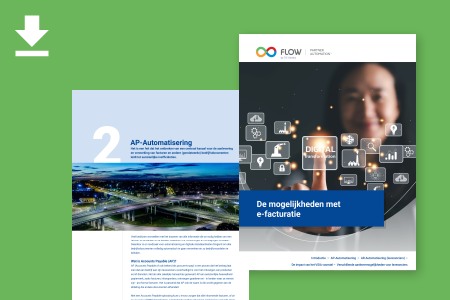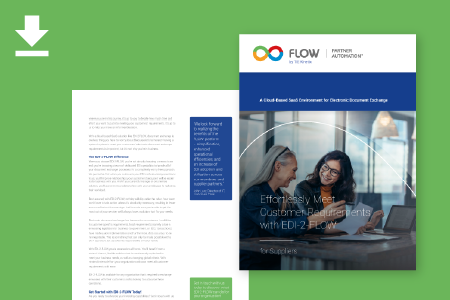Updated on June 4, 2024
Why Are Electronic Invoices Becoming Mandatory?
As of April 18, 2020, it became mandatory for all public authorities in Germany to be able to receive electronic invoices from public sector customers. The regulations regarding electronic invoicing, including its structure, scope, and timing, are defined by the e-invoicing laws and associated ordinances of the respective state authorities in each federal state.
Federal authorities, ministries, and federal companies have already implemented a unified solution through the federal portal, which allows suppliers to submit electronic invoices. However, at the state level, it was necessary to develop, optimize, and implement 16 separate laws and regulations based on the EU directive and the European standard.
Currently, not all federal states have adopted these regulations, and in some cases, the issued regulations differ. You can find more information about business-to-government (B2G) invoicing in Germany in our other blog post.
B2B E-Invoicing Coming Soon to Germany
Business-to-business (B2B) e-invoicing is not a new concept in Europe. Countries such as Romania, Poland, and Italy have been utilizing it for some time. Now, Germany is following suit.
On April 17, 2023, the Federal Ministry of Finance (BMF) presented a discussion draft for a new Section 14 of the German Turnover Tax Act (UStG). This draft proposes the introduction of mandatory electronic invoicing in the B2B sector, which could come into effect as early as January 1, 2025.
The motivation behind this change is the endorsement of a nationwide uniform electronic invoicing system by the coalition parties. This system aims to facilitate the creation, verification, and transmission of e-invoices. The introduction of mandatory e-invoicing in the B2B sector serves as an initial step toward achieving this goal.
According to the BMF's proposals, e-invoices should be issued for all services provided to another entrepreneur for their business, as long as the services are taxable in Germany and the supplier is registered in Germany.
The objectives of this initiative are:
- Ensure the proper functioning of the internal market.
- Ensure compliance with the law.
- Reduce compliance costs for businesses.
- Protect the financial and economic interests of the EU and its Member States.
Do you find this article useful? Get new educational content delivered to your inbox every month!
Email me the updates!
Formats of E-Invoices: XRechnung and ZUGFeRD
An electronic invoice (e-invoice) refers to an invoice created, sent, and received in electronic format. If you currently exchange PDF documents with your suppliers, you need to explore alternative options, as a simple PDF document does not meet the requirements of an e-invoice.
According to the e-invoice regulation established by the German government, XRechnung is the preferred standard for e-invoices. This standard was developed by the German Coordination Office for IT Standards (KoSIT) and utilizes XML as the invoice format. The current XRechnung standard supports two XML formats for e-invoicing: UBL or UN/CEFACT Cross Industry Invoice (CII).
Although XRechnung is favored by the German government, ZUGFeRD can also be used as it aligns with the European standard. ZUGFeRD consists of a PDF file and an embedded XML file. It is based on the UN/CEFACT CII standard and the ISO PDF/A3 standard.
For an electronic invoice to be recognized as such, it must meet certain technical standards. Even a scanned version of a printed document does not qualify as an electronic invoice. The Federal Ministry of Finance plans to provide a more detailed definition of the term "e-invoice" and make appropriate adjustments as part of the draft.
What Does E-Invoicing Have to Do With VAT in the Digital Age?
VAT in the Digital Age (ViDA) is a proposal put forth by the European Commission to modernize the VAT system for cross-border e-commerce transactions and simplify VAT compliance for businesses.
This proposal is part of the broader efforts by the European Commission to establish a Digital Single Market, enabling more efficient and effective trade between businesses and consumers across the European Union.
ViDA introduces several changes, including:
- Implementation of a single VAT ID across Europe, eliminating the need for different tax IDs for businesses in different EU countries.
- Mandatory e-invoicing in the B2B sector. While exemptions were allowed previously in the EU, countries like Italy and Romania have already implemented this requirement.
Starting from January 1, 2025, the European Union will complete the pilot phase and allow all member countries to implement continuous VAT law in their systems, with electronic invoices being a prerequisite.
Is E-Invoicing Relevant for Your Organization?
While there is still time until January 1, 2025, it is essential not to delay taking action. Merely having digital internal processes and the ability to receive electronic invoices does not guarantee compliance. To exchange invoices in a legally compliant manner, the entire invoicing process must be seamlessly digital. Many organizations need time and effort to understand the current state of affairs in this area and adjust their invoicing processes accordingly.
To ensure compliant invoice exchange, it is crucial to eliminate any interruptions in the invoicing process. Companies must assess their current situation and determine how they can best adapt their processes.
To exchange invoices in a compliant manner, the invoicing process must be seamless without any media breaks. Many companies need time to understand their current standing in this area and determine necessary process changes.
Business owners involved in taxable B2B sales in Germany should start considering e-invoicing, as the deadline of January 1, 2025, is rapidly approaching. Upgrading ERP systems or re-engineering and adapting internal processes will likely be necessary, so early planning is advisable.
As organizations strive to incorporate e-invoicing into their supplier relationships, they should closely examine their entire document exchange process. Are the documents fully digital or merely digitized? Can the data be automatically processed? Is the entire document exchange process automated? Answering these questions is critical for German municipalities as they navigate the implementation of the Compliance Directive in their regions.




